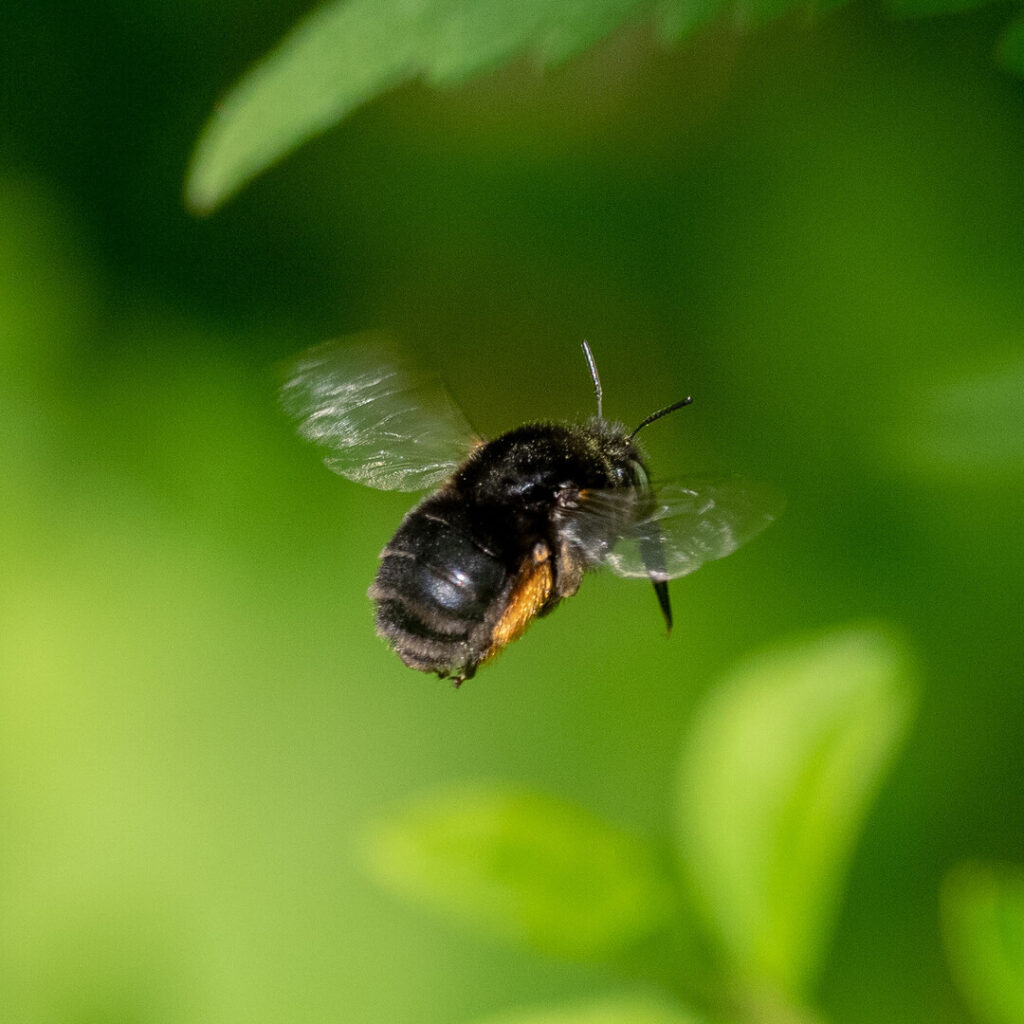Last updated on January 4th, 2024 at 02:08 pm
When it comes to the bee world, the Potter Flower Bee, scientifically known as Anthophora retusa, is a bit of a Renaissance bee. Not only is it a master of foraging, but it’s also an adept builder, crafting intricate nests that would make any potter proud.
Intrigued? Let’s delve into the captivating world of the Potter Flower Bee.
Appearance: A Subtle Beauty
First off, let’s talk about the Potter Flower Bee’s aesthetics:
- Colour: They have a black body with a distinctive orange-yellow band on the abdomen.
- Size: Adult bees range from 10-15mm, making them a medium-sized bee.
- Facial Hair: Males have a tuft of white facial hair, adding to their unique look.
Habitat: Where to Spot These Craftsmen
If you’re eager to see these bees in action, here’s where to look:
- Geographical Spread: Mostly found in parts of Europe, including the UK.
- Preferred Habitats: Coastal areas and chalk grasslands are their go-to spots.
Behaviour: More Than Just Foragers
The Potter Flower Bee has some fascinating behaviours that set it apart:
- Solitary Nature: These bees are solitary, with each female building her own nest.
- Nesting: They use mud to create pot-like structures for their eggs, hence the name “Potter.”
- Mating Rituals: Males are known for their territorial behaviour, often guarding prime nesting spots to attract females.
Diet: The Gourmet Forager
- Pollen and Nectar: They have a penchant for specific plants, with Viper’s Bugloss being a favourite.
- Foraging Range: They are known to cover large distances in search of the perfect flower.
When to Spot Them: Timing is Key
For those who want to witness these master builders:
- Time of Year: Late spring to early summer is when they’re most active.
- Time of Day: They are diurnal, meaning they are active during daylight hours.
| Best Time to Spot | Location | Activity Level |
|---|---|---|
| Late Morning | Coastal Areas | High |
| Early Afternoon | Chalk Grasslands | Moderate |
| Late Afternoon | Gardens | Low |
Conservation: A Bee Worth Saving
- Population Status: They are considered rare in some regions, making conservation efforts crucial.
- Conservation Measures: Habitat restoration and public awareness are key to their survival.
Why They Matter
- Pollination: They are specialized pollinators for certain plants, making them vital for those ecosystems.
- Soil Aeration: Their nesting behaviour contributes to soil health, benefiting the entire ecosystem.
Conclusion
The Potter Flower Bee is a fascinating species that deserves our attention and respect. From its unique nesting habits to its role in pollination, this bee is a vital part of our ecosystem.
Use our handy bee ID guide to learn how to identify bees you find on your travels.




